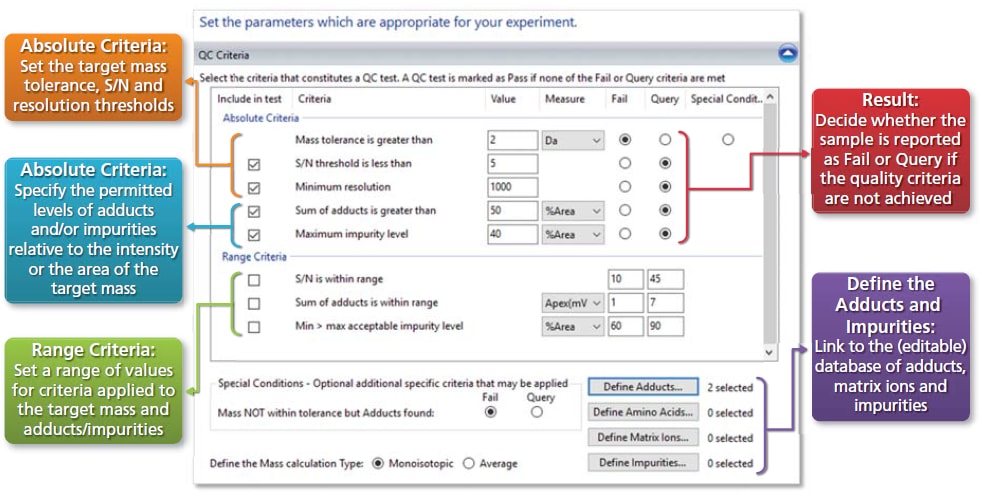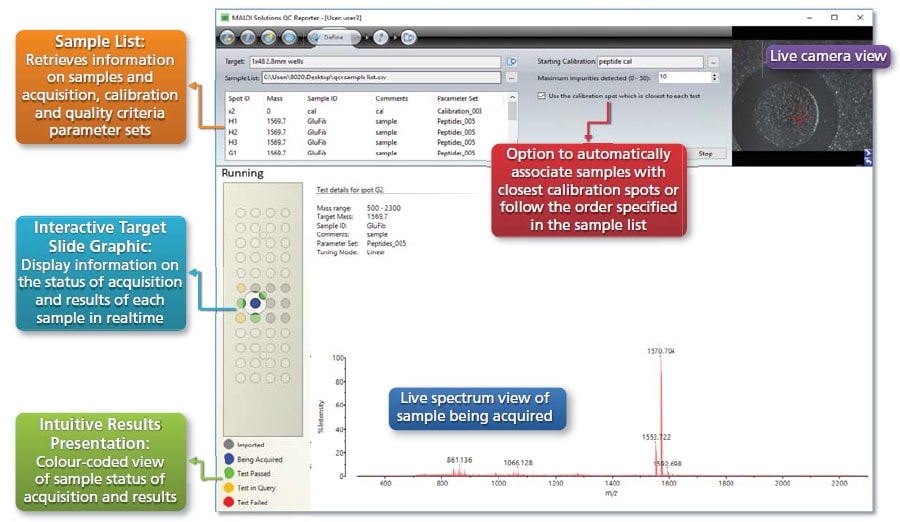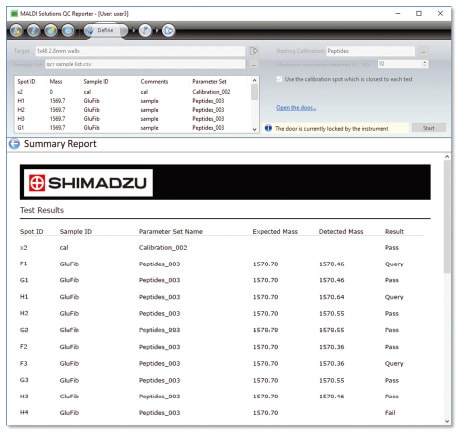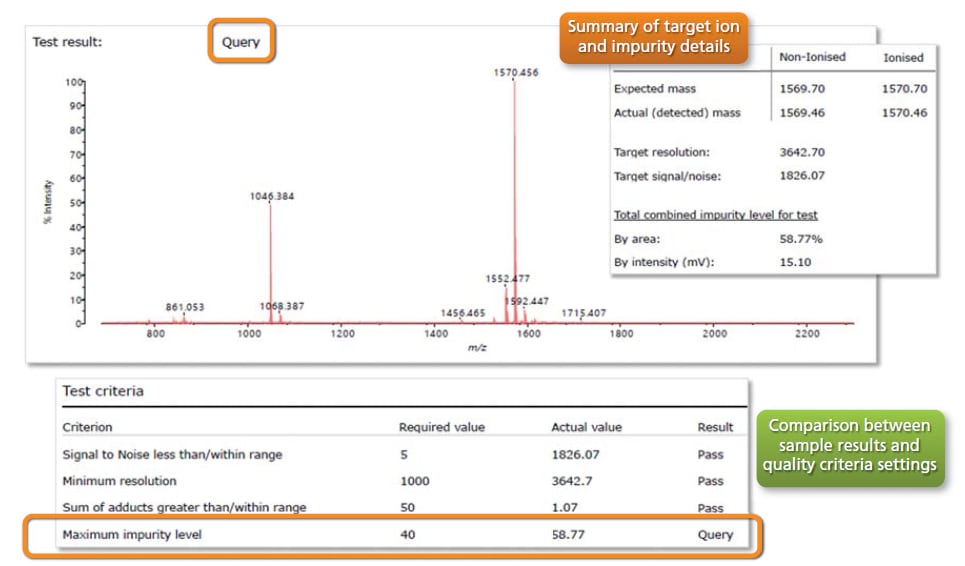QC Reporter - Особенности
QC Reporter™: mass confirmation and quality assessment
QC criteria
A wide selection of user-defined parameters can be configured as acceptance criteria for the QC assay, providing flexibility for the user to customize each type of experiment for a given application. These include:
• Mass tolerance (compared with the expected mass)
• Signal-to-noise threshold
• Minimum resolution of the target mass
• Acceptable limits for adducts
• Acceptable limits for impurity levels

Quality criteria parameters for the target mass, adducts, matrix ions and impurities.
Acquisition
The information regarding each sample is provided via a simple .csv spreadsheet containing:
• Sample location on the MALDI target
• Sample identifier/sample name
• Expected molecular weight
• Acquisition/calibration sample analysis methods (parameter sets)
• Additional comments (optional)

Results window in QC Reporter showing the colour-coded, tabulated experiment results
(Red = ‘Fail’; Green = ‘Pass’; Yellow = ‘Query’).
The acquisition, calibration and data processing methods are created and saved in the MALDI Solutions™ Data Acquisition application and can be retrieved via the seamless integration with the shared SQL MALDI Solutions database. Experiments and results are stored in the SQL database and benefit from the database security features designed to limit access to data/results and prevent unauthorized deletion of data. The data for each sample is evaluated and compared against the QC criteria, specified in the acquisition parameter set, in realtime. As the experiment progresses, the target slide graphic is updated with a colour-coded indication of the obtained results:
Green = Pass: the expected mass has been found within the given tolerance and all other specified criteria are within the acceptable limits
Red = Fail: the expected mass has not been found within the given tolerance or other specified criteria were set to trigger a ‘Fail’ result
Yellow = Query: the expected mass has been found but it does not meet the absolute criteria (e.g. signal-to-noise, resolution) or high level of impurities/adducts have been detected

Main QC Reporter window showing the progress of the QC experiment. The quality criteria specified in the parameter set are applied to each sample analyzed. The target slide graphic is updated with the colour-coded results in realtime.
Reporting
During an experiment, the acquired spectrum and result for each analyzed sample are displayed in realtime on the target slide graphic using the colour-coded results reporting schema. At the end of the experiment, the results are presented as a tabulated, colour-coded summary report in the main results window. From this view, the user can further interrogate individual sample results.
After reviewing the results, these can be exported as PDF printable reports for the experiment summary, all samples or selected individual samples. These can be used to report the results back to customers or kept as records of the sample analysis jobs.

Overview report of the QC experiment results which may be customized and exported as a PDF.

A detailed report for each individual sample can be generated, where information on the sample acquisition, target mass and levels of adducts/impurities is provided.
*In this example, the overall test result is reported as ‘Query’ due to the detected sum impurity level (% Area) exceeding the user-specified threshold.
Data security
User-access to QC Reporter is via password-protected login and is controlled by a System Administrator who manages access within the application. The Administrator is able to control access to features within the software via various roles which can be applied to individual user accounts.
For example, the acquisition, calibration and data processing methods are created and/or edited by the Administrator or by users who have been granted this permission. This protects the acquisition methods against unpermitted changes and provides peace of mind in regulated environments.

Password-protected user login generated by the Administrator.
Only those users with the correct permissions can unlock the application.

Defined options for creating/loading parameter sets and QC experiments. Only those users who have been granted the permission to create parameter sets (methods) are able to see these options.


